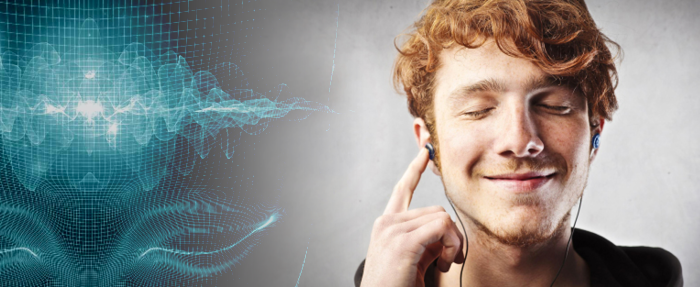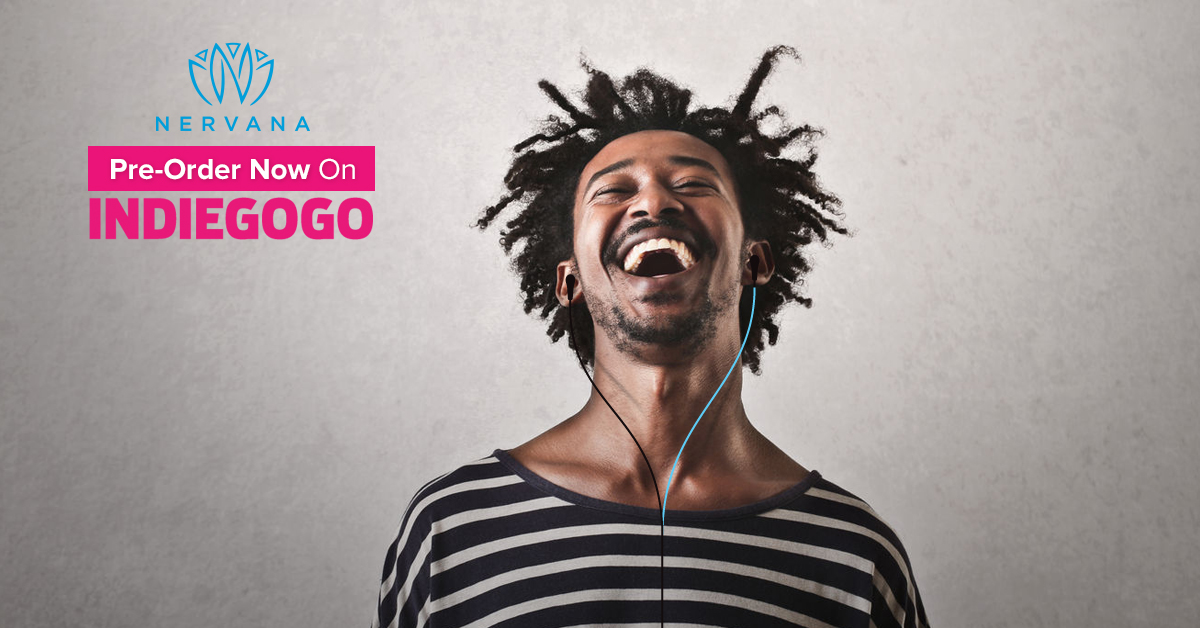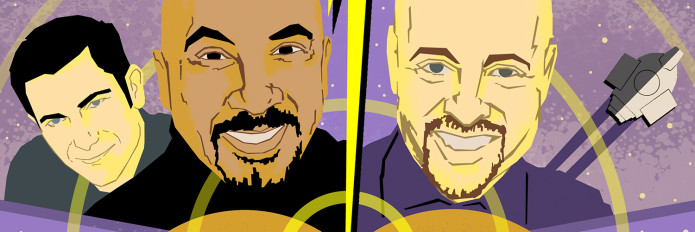Everyone likes listening to music. But a new product called NERVANA takes it to the next level, synchronizing gentle nerve stimulation with your tunes to produce a feel-good, calming effect. It sounds like something out of science fiction, but it’s actually a functioning system that’s raised more $350,000 on Indiegogo since it launched last month. USA Today called it “intensely serene.”
But, of course, a product this unique may leave you with a few questions. We caught up with a few members of the NERVANA team to ask everything you might be wondering about this campaign.
How does it actually work?
NERVANA is a wearable product that sends a gentle electrical wave through the left ear canal to stimulate the body’s Vagus nerve, while syncing with music.
“This elicits a calm, relaxing feeling for users in a natural way, which stimulates the brain’s pleasure center, known to release neurotransmitters (the body’s feel-good messengers),” says Dr. Richard Cartledge, co-creator and co-founder of NERVANA.
“This is the first consumer product available like this,” says Ami Brannon, CEO of NERVANA. “There’s nothing like this that sends a signal while you’re listening to music. The tactile sense NERVANA evokes is pleasant, a feel-good effect for your body.”
Is it safe?
Cartledge and his brother Daniel, who is also a practicing physician, had the idea to take the relaxing effect of Vagus nerve stimulation and provide it to users in a way that was entirely non-invasive.
“Vagus nerve stimulation has been studied for decades,” said Dr. Daniel Cartledge.
And, in their testing of hundreds of adults, says Brannon, they’ve seen no evidence of safety issues.
Where did this idea come from?
The Cartledge brothers are practicing physicians who’ve been fascinated by Vagus stimulation for years. They brought together a team of experts in tech and medicine who were all inspired by the vision.
“Healthcare is changing so much,” said Brannon. “We wanted to bring something fun to people but also something that could benefit them; putting wellness in their hands. The clinicians on our team have been exposed to very sick patients for the longest time; we wanted to do something that made people feel good.”
Does it work?
Positive feedback has come in through hundreds of testing sessions, says Brannon.
“The people that have experienced it say it’s like meditation or a really great acupuncture session. Some people compare it to the feeling you get after having your first glass of wine.”
Support from the Indiegogo community seems to indicate interest, too. NERVANA has already raised 441% of their original goal. “The positive response we have received from industry experts at CES and consumers across the globe has been overwhelming,” says Cartledge.
Why did they choose crowdfunding?
The team didn’t consider crowdfunding until they went to CES – previously they were self-funded, but after the overwhelming response they received at CES, they decided to work with Indiegogo in order to bring the product to market faster.
“I love the fact that crowdfunding brings together people from the community who are interested in helping you find the best elements of your product,” says Brannon, “and it helps you improve the way you communicate with your market, too.”
Interested? Contribute to NERVANA on their campaign page!
9 Responses
You must be logged in to post a comment.





I wished that they would ask reviewers to review their product. I really wanted to test it and post about it.
This Q&A and the campaign fail to clearly answer “How it works” as a physical product. It just seem to focus on repeating the technology inside it, which is really not hard to grasp if you have an understanding of the human brain, so why is there little to no info about how to use the product? Do we plug it into an external audio device, or does it require us to upload music to it? Does it have storage?
After digging through every comment and media coverage, I learned from the image in an article on Nerdist that it potentially works by plugging in an audio devices into it, probably through an input jack. Right? Maye the campaign makes little mention to a jack.
The size is slightly bigger and bulkier than an iPhone, but the campaign video makes it seem like we JUST use Nervana’s generator and headphones for this experience. Maybe this was a marketing ploy, but the campaign places WAY to much focus on the technology to claim it as a revolution, however, to see it really becoming a popular device, I think it would help to transparently show it’s practical use. Was it designed for people who use their iPhones to enjoy music? Does it work better with vinyl, or is it designed for digital audio conversion? This seems like mainly a stationary product then, right?
Is the stimulation music dependent? For example, if someone chooses to listen to music focused on violence do they experience pleasure with that? How to reduce the risks of negative behavior conditioned to positive feelings? (Not sure I am asking this clearly)… I can see a lot of potential use for people who have flashbacks.. who know they do, who would like to have fewer and for whom Nervana could help uncouple “triggers” that rekindle intolerable memories.. Jus’ sayin..
Overstimulation of the vagus nerve can cause syncope (fainting) in large part due to lowering of blood pressure and/or slowing of the heart rate; is that right? Since no one is checking blood pressure while selling or using the device, what about someone passing out while in motion and being injured, or worse? I LOVE what you’re doing AND I have unanswered questions with sooo little material to read. What about someone on beta blockers?
It seems a wonderful product. An answer to so many people sufering from insomnia and continuos sleppless nights.
This is certainly intriguing. I would want to browse the existing literature about Vagus stimulation before trying it out.
Are the wave form and frequency tunable? Any contraindications for bilateral contiguous use? Does the stimulus produce any down stream alterations in vagal function? Are other diagnostic categories being investigated?
Has anyone studied the potential of this technology to tackle panick attacks and anxiety?
Is it not cause addiction?